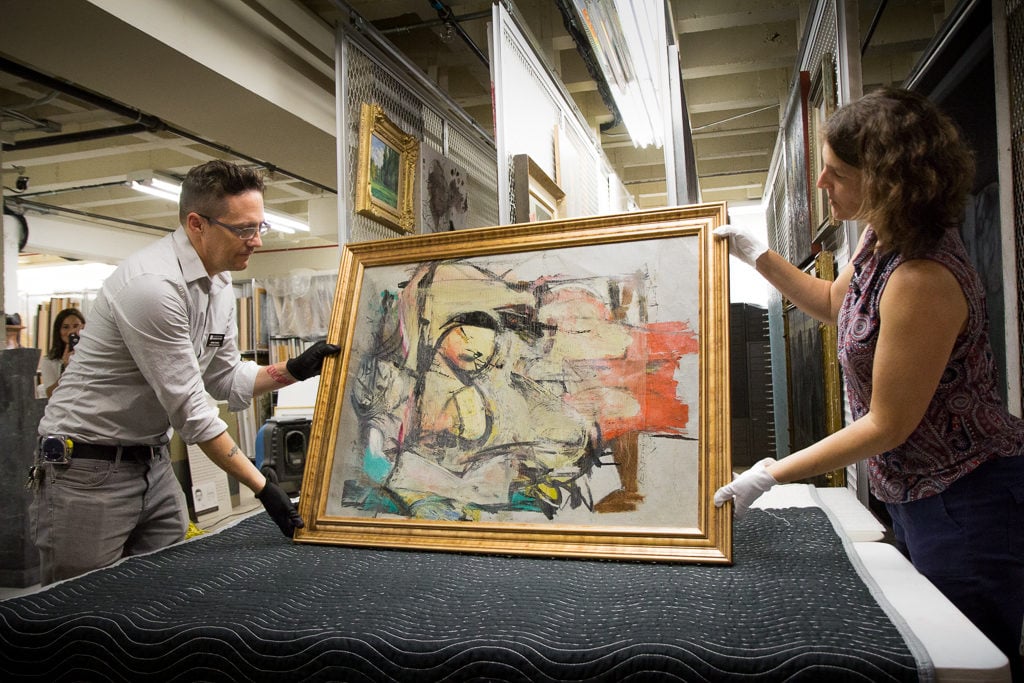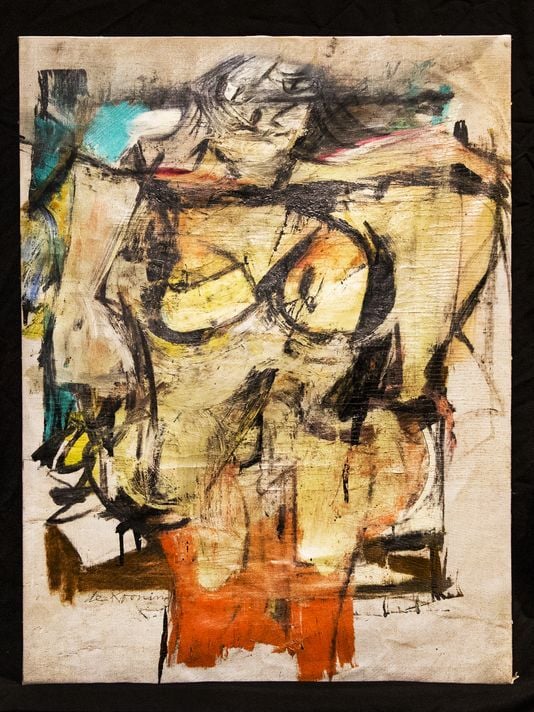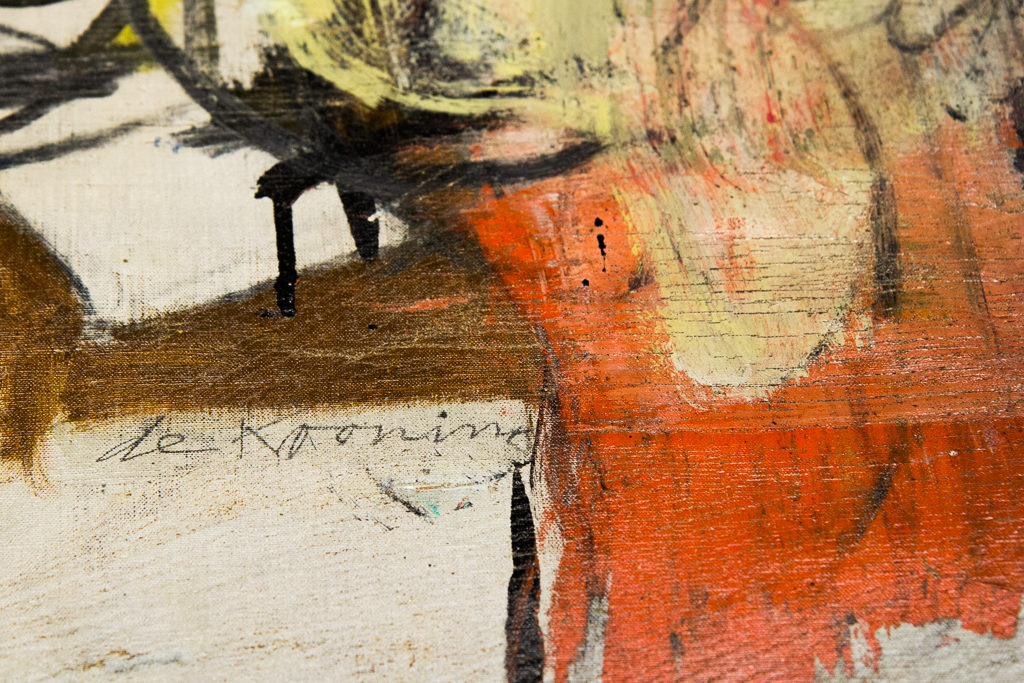Art World
A Long-Lost Willem de Kooning, Stolen Over 30 Years Ago, Was Just Returned by Good Samaritans
The painting was found in an estate purchased by a New Mexico antique shop.

The painting was found in an estate purchased by a New Mexico antique shop.

Sarah Cascone

It’s a good day for the University of Arizona Museum of Art. The institution is celebrating the return of Willem de Kooning’s Woman-Ochre (1954–55), which was stolen the day after Thanksgiving in 1985, nearly 32 years ago.
On August 11, the university announced that the painting had been found and returned by Manzanita Ridge Furniture & Antiques of Silver City, New Mexico. Preliminary testing by museum conservator Nancy Odegaard has found the work to be authentic.
“I was always very optimistic that one day we would find the painting, but it’s hard to describe the emotion of it coming home,” said Brian Seastone, chief of the University of Arizona Police Department and the original lead investigator on the case, in a statement. “There’s this sense of relief and happiness. It’s a sense of calm. It’s back, it’s home, it’s where it should be. We know the art is worth an awful lot of money, but the story behind it is priceless.”

Willem de Kooning’s Woman-Ochre, stolen from the University of Arizona Museum of Art in 1985. Courtesy of the University of Arizona Museum of Art.
The painting is one of six works in the artist’s iconic “Woman” series. Another, Woman I (1950–1952), belongs to New York’s Museum of Modern Art. Hedge fund billionaire Steven A. Cohen owns the last one in private hands; he purchased Woman II (1952) for a reported $137.5 million from music magnate David Geffen in November 2006.
In 2015, in an article marking the 30th anniversary of the then-unsolved heist, UANews speculated that the missing work would be worth as much as $160 million. Earlier that year, Geffen had sold another of his de Kooning works, 1995’s Interchange, for a reported $300 million in a private sale, smashing the record for the world’s most expensive artwork. The artist’s prices at auction are much lower, according to the artnet Price Database, topping out at $66.3 million in 2016.

A police sketch of the suspects in the 1985 de Kooning heist released shortly after the crime took place. Courtesy of the Arizona Star.
The theft of Woman-Ochre occurred on the morning of November 29, 1985, after a man and woman followed an employee into the institution. The woman distracted the museum guard while her accomplice, mustachioed and wearing glasses, sliced the canvas out of its frame and absconded with the artwork. From start to finish, the robbery took just 15 minutes.
“The thieves actually committed two crimes that day,” said Kimberly Andrews Espy, University of Arizona senior vice president for research, in a statement. “First, they stole an important signature painting from the university’s museum collection. They also stole more than 30 years of access from the public and scholars across the world, depriving them of the opportunity to appreciate, learn from, and be inspired by a significant artist.”

Willem de Kooning, Woman-Ochre, stolen from the University of Arizona Museum of Art in 1985, has been recovered. This detail shows the artist’s signature. Courtesy of the University of Arizona Museum of Art.
At the time, the painting was worth $600,000. Its whereabouts for the three-plus decades following the theft are unknown. The narrative only resumes earlier this year with the acquisition of an unnamed estate by Manzanita co-owners David Van Auker, Buck Burns, and Rick Johnson.
“We didn’t pay anywhere near $160 million for it,” Burns assured artnet News, calling their discovery of the painting amid the estate’s contents a “happy coincidence.”
Van Auker put the painting on display in the shop window, where several customers commented that it looked like the work of de Kooning. After researching the artist, he quickly realized that the latest addition to the store’s inventory was a dead ringer for UA’s long-lost painting.
“The minute we knew, we were calling the museum,” said Burns. “We are happy, happy, happy that the painting is back home.”
Following the painting’s recovery, Odegaard compared the canvas with the edges left in the abandoned frame following the theft. The cut marks and brushstrokes aligned perfectly, proving that this was in fact the same work.
In a statement, University of Arizona president Robert C. Robbins thanked and acknowledged the Mazanita staff as heroes, adding that “it’s a great day for the University of Arizona and great news for the art world and people who care about public art.”